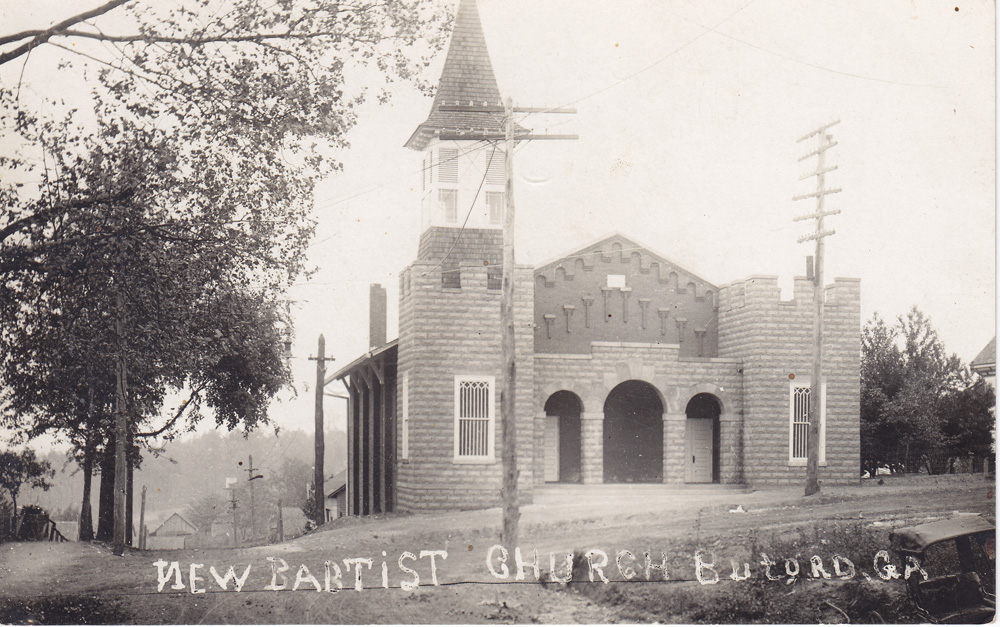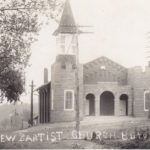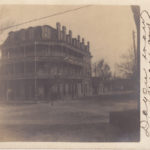 Probably the most important part of the Museum’s collection is the photo archive. Within our fire-rated filing cabinets, we have several thousand photographs from Buford’s past, including families, buildings, schools, landmarks, business operations, and any other aspect that you can think of when it comes to our history. We are always on the look-out for any new image or a better example of one in our holdings that is damaged. The internet has opened a whole new avenue for locating long lost photographs for curators all around the world. Once an original photo leaves the area, it may be nearly impossible to retrieve it. Many were mailed as Real Photo Postcards (RPPC); sometimes only a very few prints were ever made, and others were taken with family members when they moved from the area. As the years pass, and as the pictures slip from the original owners, the next one to hold them may not treasure them quiet as much as the previous owners did. As this happens several times, people end up with photographs in, say Indiana, that pertain to Buford, Georgia; and they are worthless there. As it used to be, the closer the photo was to the original source, the more likely its value would be higher. Now, the internet has made it possible for anyone, anywhere to be just a few keystrokes apart from someone a world away who may have something of interest to him. This is a bad news – good news situation. The bad news is that we typically have to pay dearly for the rare images, but the good news is that we can bring them home for the community’s enjoyment.
Probably the most important part of the Museum’s collection is the photo archive. Within our fire-rated filing cabinets, we have several thousand photographs from Buford’s past, including families, buildings, schools, landmarks, business operations, and any other aspect that you can think of when it comes to our history. We are always on the look-out for any new image or a better example of one in our holdings that is damaged. The internet has opened a whole new avenue for locating long lost photographs for curators all around the world. Once an original photo leaves the area, it may be nearly impossible to retrieve it. Many were mailed as Real Photo Postcards (RPPC); sometimes only a very few prints were ever made, and others were taken with family members when they moved from the area. As the years pass, and as the pictures slip from the original owners, the next one to hold them may not treasure them quiet as much as the previous owners did. As this happens several times, people end up with photographs in, say Indiana, that pertain to Buford, Georgia; and they are worthless there. As it used to be, the closer the photo was to the original source, the more likely its value would be higher. Now, the internet has made it possible for anyone, anywhere to be just a few keystrokes apart from someone a world away who may have something of interest to him. This is a bad news – good news situation. The bad news is that we typically have to pay dearly for the rare images, but the good news is that we can bring them home for the community’s enjoyment.
Here are three such photos that we purchased recently. Now, I realize that two of these are a little outside the scope of “All Things Buford,” the Museum’s de facto motto; but I felt it necessary to nab these images when they became available for the benefit of the Greater-Buford community. I also felt the prices that I paid were well below the photographs’ value. The image of the Baptist Church was a different story. There was another collector of rare images that wanted it nearly as badly as I did, so I had to pay dearly for what might possibly be the last one of this RPPC to survive. I have encountered the collector before, and I believe he/she is writing a book comprised of rare, small town images in Georgia, much like the 1991 book by Gary L. Doster, From Abbeville to Zebulon: Early Postcard Views of Georgia.




